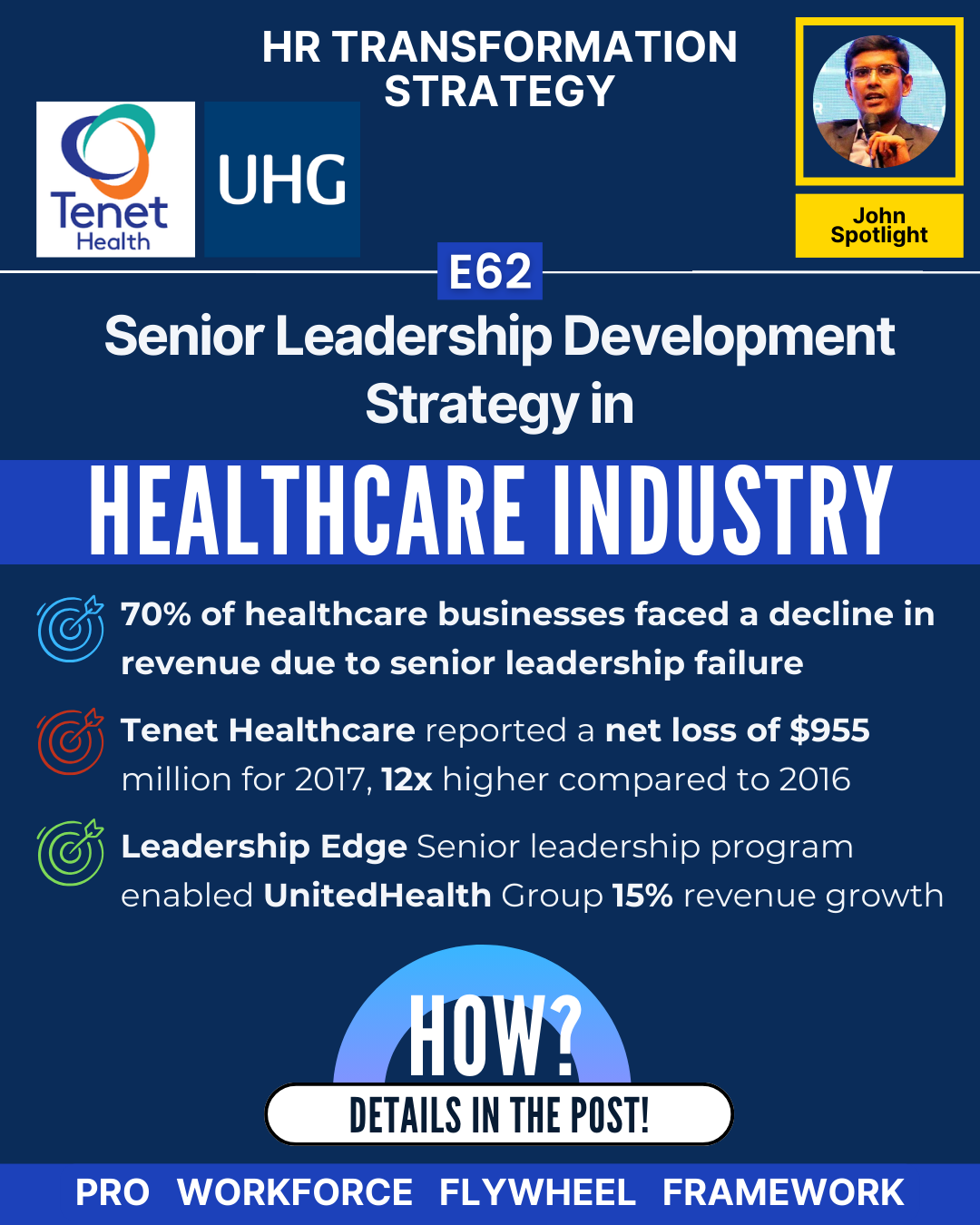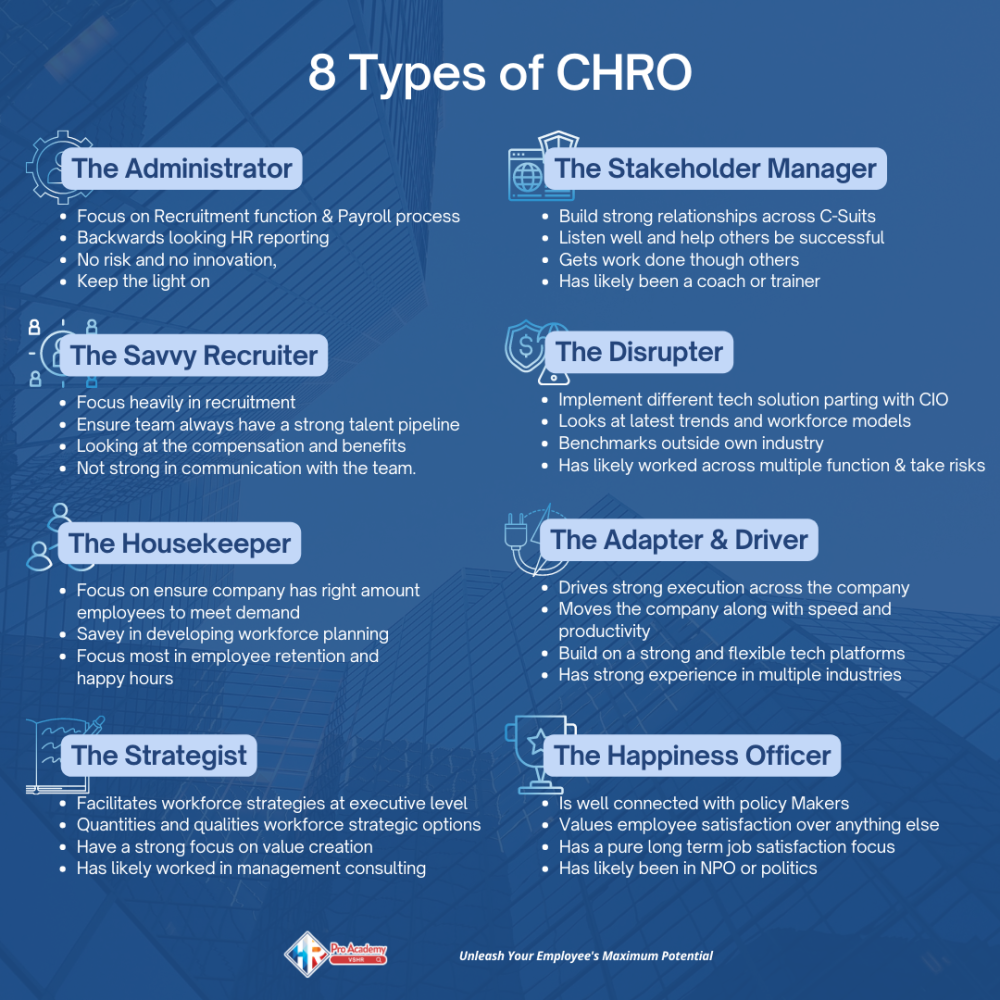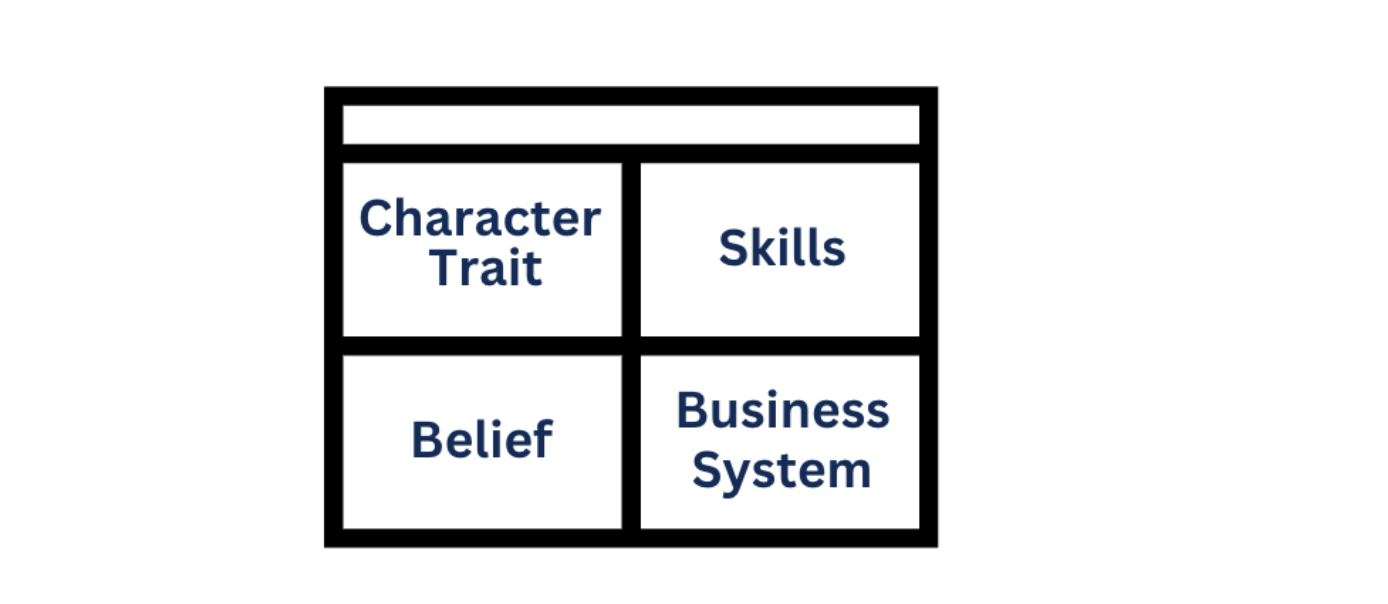|
This issue has escalated from a simple people issue to an extreme cultural crisis. Today, we focus on HR branding, which is crucial. How often do we encounter situations where we avoid hiring from certain companies due to their negative culture? HR professionals, HR leaders, and business leaders, let's delve into these scenarios and see how they resonate with you:
If any of these situations sound familiar, this video is perfect for you. I will share tools and research to address these issues effectively. Research InsightsOur research, conducted since 2021 across 200 companies, revealed some startling insights. Of these companies, 40% were multinational, 40% were local corporations, and 20% were established startups. We discovered that in companies with profitability below 5% growth, 80% of the workforce was either actively or passively seeking new opportunities. Another insight was the disconnect between leaders and employees. Leaders often view employees as obstacles rather than extensions of their efforts. This mindset is prevalent in about 85% of companies surveyed. Addressing the Cultural IssueThis is a significant issue that has become ingrained in company culture. In our study of hundreds of companies, we found that 30% suffer from a severely negative culture. To solve this problem, we utilize the Workforce Flywheel Framework, which consists of three columns: Disciplined People, Disciplined Process, and Disciplined Culture. The issue we're addressing today falls under Disciplined Culture. Building a Positive CultureCreating a positive culture involves two fundamental steps:
Further Resources For a detailed, step-by-step guide on building a disciplined culture, check out my book, "100x Business Workforce." This book offers practical tools, templates, frameworks, and research to help you create a flywheel effect in your workforce, taking your company from its current level to the next. Access and ResourcesTo get your copy of the book, join the priority list here. You'll receive early access notifications and additional bonuses, tools, and resources to facilitate your HR transformation. Joining the list is free and requires no credit card.
For more insights into the other columns of the Workforce Flywheel Framework, watch my other videos linked in the description. Additionally, check out the free scorecards available in the description to assess your workforce's current state. These scorecards provide industry benchmarks and expert advice to help you improve productivity and effectiveness. For further assistance, book an appointment with our experts via the link provided.
0 Comments
The Pro Workforce Flywheel Framework is a strategic model designed to create and sustain momentum in workforce development, ultimately driving business growth and success. This framework focuses on a continuous cycle of improvement and optimization in various aspects of workforce management, from recruitment and training to employee engagement and performance management. Building a flywheel effect in a business can create sustained momentum and drive long-term success. The question is how? Here are the key benefits of developing a flywheel effect: Continuous Improvement and Growth:
Enhanced Efficiency and Productivity: As the flywheel gains momentum, processes become more efficient and streamlined. The cumulative effect of repeated actions and optimizations leads to higher productivity and reduced operational costs.
Increased Customer Satisfaction and Loyalty: Consistently delivering value and positive experiences to customers builds trust and loyalty. As satisfied customers become repeat buyers and advocates, they contribute to the flywheel's momentum, driving further growth.
Sustainable Competitive Advantage: The flywheel effect creates a self-reinforcing cycle that is difficult for competitors to replicate. As the business continuously improves and grows stronger, it establishes a sustainable competitive advantage.
Resilience and Adaptability: A well-built flywheel enables a business to adapt to changes and challenges more effectively. The momentum generated by the flywheel helps the organization remain resilient and responsive to market shifts and disruptions.
Scalability and Long-Term Success: The flywheel effect supports scalable growth by building a solid foundation of efficient processes, customer loyalty, and continuous improvement. As the business scales, the flywheel's momentum accelerates, driving long-term success.
Employee Engagement and Development: A flywheel effect fosters a culture of continuous learning and development. Employees are more engaged and motivated when they see their contributions driving tangible results and growth.
Reinforced Brand Reputation: Consistent delivery of value and positive experiences enhances the company's brand reputation. A strong reputation attracts more customers, talent, and business opportunities, further fueling the flywheel.
In summary, building a flywheel effect in a business leads to continuous improvement, increased efficiency, higher customer satisfaction, sustainable competitive advantage, resilience, scalability, employee engagement, and a reinforced brand reputation. These benefits collectively drive long-term profitability and success, creating a virtuous cycle of growth and momentum.
To know how to build Pro Workforce flywheel in your company, let's get the Pro Workforce flywheel framework here The concept of an infinite game mindset in business comes from Simon Sinek's book, "The Infinite Game." An infinite game has no defined endpoint; the goal is to keep playing and ensure others can continue as well. In business, this means focusing on long-term success rather than just short-term victories. While short-term victories are crucial, particularly in business operations, they primarily sustain the business. In our highly transformative and competitive world, growing a business organically by solely focusing on operations is nearly impossible. What we need is to create a flywheel effect. The Flywheel Effect in Business The flywheel effect in a business context involves building momentum through a series of small, consistent actions that lead to significant and sustainable growth. Similar to a flywheel in machinery, which gains speed and energy over time with initial effort, businesses can achieve exponential growth by continuously improving processes, enhancing employee skills, and fostering a positive culture. These incremental improvements create a compounding effect, leading to increased efficiency, productivity, and a powerful competitive advantage. This approach underscores the importance of persistence, consistency, and strategic focus for long-term success. Creating the Flywheel Effect: Discipline in People, Process, and Culture As HR and business leaders, our goal is to create a flywheel effect in our workforce. This will ensure that every step we take adds more value to the business. Great companies often have a flywheel working in their favor, giving them a significant advantage in creating breakthroughs and sustaining growth. 1. Discipline in People To build the discipline people column, focus on two fundamental bricks: Level 5 leadership and productivity/effectiveness.
Example: A mid-sized tech company identified a gap in mid-level management and implemented a leadership development program. Over two years, internal promotions increased by 30%, reduce hiring and rehiring cost by 80% and productivity improved by 20%.
Example: A retail chain used performance metrics to identify underperforming areas. By introducing targeted training and clear performance goals, they boosted sales by 15% in those locations within six months. 2. Discipline in Process The discipline process column focuses on creating a game manager effect within the HR department, which manages the company's infrastructure.
Example: A manufacturing firm focused on streamlining its leadership capabilities and enhancing the employee experience. To achieve this, the firm developed and deployed processes and approaches to assess these two factors comprehensively. Subsequently, they initiated consistent projects to foster a culture and build an employee brand that positioned them as one of the best employers in the industry. This strong employer brand attracted high-caliber talent, which further propelled the company's growth and success. 3. Discipline in Culture A disciplined culture is essential, similar to cooking and cleaning up after a meal to prepare for the next one.
Example: A fast-growing startup aimed to double its business revenue each year by prioritizing and developing a strong company culture. The startup defined core values centered around innovation and customer satisfaction. By creating and deploying this culture first, they implemented regular workshops and team-building activities to embed these values deeply within the organization. This strategic focus led to a 40% increase in employee retention and a 30% boost in customer satisfaction ratings, ultimately driving significant revenue growth and establishing a robust foundation for sustained success. Conclusion By developing these three columns and consistently improving them, you can create a domino effect in your company. A single, strategic action can set off a chain reaction, leading to a series of positive outcomes across the organization. For more resources on building your company's flywheel effect, download bellow. No fees required—just valuable insights to help you get started. Useful Resources:
Feel free to reach out if you need further guidance or support in implementing these strategies. Together, we can create a thriving, resilient business.
What is the biggest LEVER in the business?So why not put the right effort into growing that 10x?5/29/2024 "30% of the HR leaders shared that the CEO's support is the number 1 obstacle in workforce transformation." But after 6 months, the last Friday in Pro Research and lunch season 3, we found around 50% of HR leaders shared the biggest obstacles are - Expertise and Resources. That clearly shows that 'Expertise & resources' are the number 1 factors in making a company win in this economy. Let's take a look at three more insights on this in terms of business impacts when a business focuses on expertise: Productivity Increase: According to the National Bureau of Economic Research, a 10% increase in workforce education level can lead to an 8.6% increase in productivity per employee. Revenue Growth: Deloitte’s research shows that companies with strong learning cultures, which continuously enhance employee expertise, are 92% more likely to innovate and 52% more productive. These companies also tend to experience 37% higher revenue per employee compared to those that do not prioritize skill development. Profitability Impact: Research by McKinsey & Company indicates that organizations investing in skill development can see a return on investment (ROI) of 6 to 1. Moreover, companies in the top quartile for employee skill levels experience profitability that is 25% higher than those in the bottom quartile. So the goal is to gain a higher level of expertise and resources in each level of the business, which means - C Suie, HOD, Middle manager, and Executive. Because expertise is the lever for solving business challenges. Here is one resource that can be included with the HR transformative skillset which is 100x Business Workforce, to create breakthroughs in business by workforce. Let's join the priority list today so you can get the gift and parks here Among you who could not make it for Pro Research and Lunch Season 3, the Guest wishlist is open now for Season 4, which will happen in Q3 2024. We always have limited spot, so let's join the guest Wishlist now here Useful Resources:
Transformation is a project and a tool to win quick revenue !?! A Board member speaking, is that person's expertise aligned with input/ not? After a major board meeting, myself and the company's CFO both were standing in front of a critical challenge. The board demanded rapid growth, pushing us towards quick fixes for immediate financial gains. However, CFO and I knew that would not bring us success. We believed true transformation required a strategic, long-term approach. Over years, I have witnessed dozens of companies crumble after pursuing short-term profits without sustainable strategies. I was determined not to repeat that mistake, CFO and I presented a bold plan to the board. Instead of chasing quick wins, we proposed investing in innovation, developing digital services, employee development, and process optimization. Our approach wasn’t just about the numbers. We collaborated with all departments, understanding their needs and aligning the transformation goals with the company’s core values. By fostering a culture of continuous improvement, we ensured that every change was sustainable and beneficial in the long run. Well, it was not a smooth sail in front of the board. Board members challenged, and raised new points which helped us to rethink and optimize our plan even better. The key factor was - In the board the person is speaking is that person's expertise aligned to their input or not? Finally, we started to execute with the rubber stamp of the board. The results started slow but it was building up like a snowball. During the runway to form the snowball, one of the critical factors was the stakeholder's expectation management. Particularly some board members who did not have the same lens as us. So I enabled them with proper lense, so they could realize the progress. Over the years, the company didn’t just see a spike in profits and valuation; we experienced steady growth, improved employee satisfaction, and strengthened market position. Together, CFO and I proved that transformation, when approached as a comprehensive business process, leads to enduring success. True transformation isn’t about quick wins. It’s about building a foundation for lasting success. 5B USD lost! Discover the critical leadership mistakes that led to J.C. Penney’s dramatic downfall in just one year. Is your business at risk Retail Industry and Senior Leadership Insights, Deloitte reported 49% of retail companies experienced a decline in revenue due to leadership failures. Impacts on business Revenue due to Senior Leadership Failure Due to senior leadership failure, J.C. Penney's revenue fell sharply from $17.3 billion in 2011 to $12.9 billion in 2012, a decline of 25%. The company reported a net loss of $985 million. Why?
How to avoid such revenue loss? Solution is to develop a strong pillar, "Descipline People" taking the senior leadership team as the core brick to form the workforce flywheel effect in business. Target successfully navigated similar challenges by implementing a strategic turnaround plan focusing on digital transformation, store optimization, and an enhanced customer experience. Target used the workforce flywheel effect to achieve 10.2% net income , from $2.74 billion in 2016 to $3.02 billion in 2017. Here where their key steps -
P.S. Among those strategies, which one will be most affordable for you to apply to your company? Reference sources
Case Study: Tenet Healthcare's Senior Leadership Failure resulted in a staggering $955 million net loss in 2017. Avoid such pitfalls by learning from their mistakes. Healthcare Industry and Leadership Insights: Harvard Business Review reported that 70% of healthcare businesses experienced a decline in revenue due to senior leadership failure. Impacts on business Revenue due to Senior Leadership Failure This happened to Tenet Healthcare which resulted in a net loss of $955 million for 2017, compared to a net loss of $79 million in 2016. Why?
How can I avoid such revenue loss? UnitedHealth Group focused on senior leadership development and successfully increased net income to $10.6 billion in 2017, compared to $7.1 billion in 2016, representing a growth of 49% Here are United Healthcare Group strategies:
P.S. Among those strategies, which one will be most affordable for you to apply to your company? References & Sources
Author Details John Masud Parvez, Top International Coach and Business Expert More Details:
More Help for you
Digital beauty innovations promise a revolution, yet many fall short, leaving consumers wanting more. Discover why digital product failures plague the beauty industry and how to ensure your innovation hits the mark. Beauty Industry Insights:
Due to lack of VISION, a real-life failure of a digital product in L'Oréal Digital Product: Makeup Genius App Challenge Loreal Faced:
Why Failed?
Solution for this: This is how SEPHORA used Vision in their DX Products
Let's Learn from L'Oréal's mistake and ensure your digital product's success with a clear vision and consumer-centric approach! 💄✨ P.S. Among those strategies, which one will be most affordable for you to apply to your company? References
#digitalproduct #digitaltransformation #digitalopportunity #leaderhsip #hrleader #businesstransformation #digitalinnovation #johnmasudparvez #coaching #training #mentoring #businessstrategy #digitalproduct #productdevelopment #johnspotlight #loreal #sephora #DxFlywheelFramework More Help for you
FMCG companies are racing to embrace digital products, but many are stumbling due to a flawed vision. Discover how overlooking key consumer needs is leading to digital product failures and what you can do to avoid this common pitfall. FMCG Industry Insights Due to lack of VISION, a real-life failure of a digital product in PepsiCo Digital Product: Pepsi True Problem:
Why Failed?
Solution: VISION How The Coca-Cola Company Used Vision as Dx Solution
Learn from PepsiCo's mistake and ensure your digital product's success with a clear vision and consumer-centric approach! P.S. Among those strategies, which one will be most affordable for you to apply to your company? References
#digitalproduct #digitaltransformation #digitalopportunity #leaderhsip #hrleader #businesstransformation #digitalinnovation #johnmasudparvez #transformation #businessstrategy #digitalproduct #productdevelopment #johnspotlight #cocacola #pepsi #pepsico #DxFlyhweelFramework More Help for you
Drawing on 7+ years of research and a transformative nonprofit experience, "100x Business Workforce" author John Masud Parvez reveals a critical insight: people are the true infrastructure of a successful company. His passion for aligning purpose with profit ignited when he faced burnout while trying to scale his nonprofit. Traditional HR methods proved ineffective, leading him to develop innovative models and tools for fostering "micro-breakthroughs" that drive exponential company growth. This book shares the stories of HR professionals like Sarah and Mai, who struggled with outdated tools and limited opportunities in a rapidly evolving business landscape. It emphasizes that today's HR leaders must become strategic partners, driving business goals rather than just managing processes. Who Should Read This Book:
Why? John Masud Parvez wrote "100x Business Workforce" after six years of HR research. His own experience founding the non-profit VSHR exposed a critical truth: without the right people strategy, even purpose-driven organizations struggle. Frustrated by traditional HR methods, he sought a way to align passion with performance. Combining his CIO and business expertise with lessons from mentors, he created innovative HR tools and models. Applying these to VSHR led to rapid growth and impact, proving his powerful belief: “People are the infrastructure of a Company.” Business Breakthrough and Micro-breakthrough A company or organization needs to continuously create micro-breakthroughs by the workforce and leader of the company to build up the progressive momentum that finally takes a company to the next level in terms of business growth. A company’s HR department needs to constantly focus on people, expertise, and strategy to facilitate micro-breakthroughs for the workforce and leaders. The beauty is also the different expertise, people, and strategies required to facilitate different micro-breakthroughs at different business levels. That sounds like a puzzle, right? But you will find a vision, roadmap, approach, tools, methodologies, and templates to make that happen for your company when you reach the last page of this book. Career Story of HR Professional The book commences with the narrative of Sarah Nguyen, who initially excelled in her role. However, shifting industry dynamics, varying business levels, and CEO expectations shook her confidence and hindered her career achievements. The underlying issue stemmed from her lack of access to updated tools and guidelines essential for success in this evolving landscape. Additionally, the book shares the story of Mai Nguyen, who tirelessly endeavored to prove herself and even pursued opportunities in smaller-sized businesses to advance her career in HR. Despite her efforts, she faced challenges securing these opportunities as CEOs, COOs, and GMs sought HR leaders capable of actively contributing to business growth and objectives. The book emphasizes that to acquire such skill sets, HR professionals require access to a comprehensive toolbox and ample practice opportunities to effectively demonstrate their capabilities during interview discussions. What type of HR leader are you or are you becoming? In HR, there are four primary career segments that range from entry-level positions to more senior positions: advisors, service providers, and solution providers. This book provides, a mindmap of 8 types of CHRO as follows: The Greek philosopher Aristotle, who was born in Stagira in 384 BC, is regarded as one of the most important thinkers in Western philosophy. He studied under Plato and afterward served as Alexander the Great's tutor. Once Aristotle said, "Knowing yourself is the beginning of all wisdom." This book will therefore lead you on a cooperative journey of thoughtful reflection and brainstorming that will increase your productivity. By actively engaging with the content, you will discover more about your personality, philosophy, strengths, and sense of self. Additionally, you will gain a wide range of pertinent skills that will improve your ability to grow both personally and professionally. By the time you finish reading this book, you will have a deeper understanding of your identity and values in the context of workforce transformation. You will also know how to use your newly gained skills and knowledge to get past roadblocks in the HR transformation process, pursue your goals with confidence and purpose. To identify the core strengths, weaknesses, and opportunities, the author has developed and shared the CHRO Expertise Scorecard, which is helpful. click here. This scorecard provides guidelines, a customized report, and industry benchmarks, and there are no fees for this. Besides that, the book has different types of smoke tests to identify the present position of the HR departments. Here, positions mean how the other department staff, leaders, and CEO look at the HR department. 3P Principles framework to build 10x Workforce Author-guided, we will leverage the 3P Principle framework, which will aid us in comprehending and addressing three fundamental principles for the company. This framework will serve as a valuable resource for guiding our next steps. So let’s start with the first principle Principle 1: What game are we in business? The concept of an infinite game mindset in business comes from the book "The Infinite Game" by Simon Sinek. An infinite game is a game with no defined endpoint, where the goal is to keep playing and to keep others in the game as well. In the context of business, an infinite game mindset means focusing on long-term success and staying in the game for the long haul, rather than just trying to win short-term victories. How does this create a blind spot for the HR department or manager? A human resources (HR), manager or CEO strategy lacking an infinite game mindset often focuses solely on short-term wins and immediate objectives, neglecting long-term sustainability and adaptability. Instead of fostering a culture of continuous improvement and growth, such a strategy may prioritize cost-cutting measures, reactive problem-solving, and rigid policies. This approach can lead to disengaged employees, high turnover rates, and an inability to navigate evolving challenges in the competitive landscape. Without an infinite game mindset, HR strategies may struggle to foster innovation, nurture talent development, and align with the organization's overarching goals and values. Principle 2: How do you win the infinite game of business? Think of growing a business like climbing a staircase. You've got to reach that amazing view at the top, but you need to take each step to get there. Businesses need those smaller wins to keep moving forward. But, if you're busy trying to solve problems way up on the 5th floor when you're still on the first, well, you're going to get stuck. Those first-floor problems don't just disappear – they'll trip you up later. So, the big question is: how do we figure out where we are on the staircase and tackle those problems head-on so we can keep climbing? Principle 3: How do we solve the right problem at the right time? First things first – businesses don't grow in a straight line. There are stages, and things like money, profits, and all that financial stuff are good indicators of where you're at. Now, every industry's a little different, and how fast you move depends on a bunch of factors. But generally, we can define businesses in five common stages – from making zero dollars all the way up to those huge companies generating revenue in billions. Let's break down each stage by how much money the business makes in a year. Our goal? Figure out what it takes to get a perfect 10/10 score and move on up to that next level! In the above table, the author showed a table that is called the 10x business growth framework. This framework clearly shows what we need to focus on to grow our business in different stages. So as HR professionals, CEOs, and managers, we need to identify the priorities at different stages of the business. The framework table has stages. At each stage, we will develop the micro-aesthetic to propel the business forward. How to create those breakthroughs? This 100x Business Workforce is the toolbox that provides step-by-step guidelines, resources, and tools for HR professionals to create breakthroughs. The meaning of Productivity Author said: Productivity is when the workforce is actually doing the right thing at the right time, done by the right people in the company. An entrepreneur or business owner doesn't just sell products or services; they sell the entire business. They oversee its operations, while others, like the CEO, leaders, and executives, play key roles within the business. Think of it like a hamburger: while meat, cheese, and bread are important ingredients, it's their combination that makes the burger. Similarly, in business, each role contributes to overall success. Let's explore those roles with our Pro Business Hamburger framework Here is a business setting when we compare that with a hamburger, which we call the Pro Hamburger framework. Here are the roles we have in this framework The bacon slice: CEO, is the one who is working on business strategies for growing the business. The Beef: These are the muscles of the company who are the executives of the company, executing all the different functions and taking the business forward. The Cheese: This is the manager, who is gluing together all the executives (beef) and ensuring there are no gaps between them and execution is done seamlessly. Top Bun: This is the face of the company, which is typically called branding, but it actually represents the trust of the company. That’s why people want to buy the products and services of the company and want to join the company as employees. Bottom Bun: This is the connection between employees, products, brands, and customers. This one acts as the frame for the whole Hamburger. Tomatoes: These are the processes and rules in the company to keep it on the growth track. So these work as guidelines for how someone can work and take part of the company’s growth, success, operations, etc. The Game Manager: The HR department acts as the game manager, responsible for putting together the hamburger. This includes sourcing ingredients, ensuring they're added in the right order, sticking to the recipe, and packaging the hamburger correctly. That’s why, in this book, the author addressed the ‘HR department team members as ‘Game Managers’. A game manager must master a few key factors to successfully deliver an outstanding game to the industry and shareholders. First and foremost, as game managers, we need to learn, understand, and support the CEO to garner their attention and endorsement. We must also focus on creating, onboarding, cultivating, and upskilling our leaders and effectively executing their strategies. As game managers, our mission is to develop trust, establish rules and processes, and foster connections among the CEO, leaders, executives, company products and services, and customers. The pressing question then arises: how can we accomplish this effectively and efficiently as game managers? This is precisely what we will explore throughout this book in the upcoming chapters, along with acquiring all necessary resources, tools, and support. 10x Workforce Equation The author provided a valuable scorecard to identify and assess any company's or team’s productivity level. The scorecard is here The book demonstrates the equation an HR leader or professional needs to create in the business to facilitate growth. Because this is the equation that clearly defines the lever an HR department can create inside the business. The author described that we have ultimate leverages in this equation. By focusing on the talent, we can always onboard talents, encourage them, and build a bigger team as well. And there is no limit on this. On the other hand, we can always upskill, reskill, and add new skills to our workforce based on our direction and business strategy. And there is no limit on this as well. So when we do both in the right direction, we build a winning workforce that takes our business revenue to billions of USD. So now the equation completes like this: To make the equation effective, the HR department needs to focus on the four factors: character traits, skills, and business system. The transformative cycle in the loop The whole idea behind the "HR Transformation Toolbox" book is that it's not a one-and-done deal. It's about this cycle of learning and doing. You read chapters 2 through 9, get those big ideas, and then use the tools and resources in the book to actually apply them in your company. Think of it like a continuous loop. You improve a little, then learn some more, then improve again. With each cycle, your team gets better, you tackle bigger challenges, and the whole business moves forward. We call those little improvements "micro-breakthroughs," and they add up over time. The "100x Business Workforce" book is your guide for this whole process. It's got everything you need to make those changes happen. This way of thinking is inspired by experts like Peter Senge – they're all about businesses constantly learning and getting better. That's how you create a company that can adapt and really thrive! Win Award to Build Credibility From the research, the author found that 70% of HR initiatives are lacking the right amount of support from the CEO. So the HR department needs to demonstrate the credibility of the CEO and other business leaders to win the right amount of support. So the 100x Business Workforce Book inspires and provides a step by step process to win an HR award. There are many HR awards, but the Pro Alpha Award is an award that directly recognizes the different transformative HR projects and honors HR leaders and professionals. The details of the award are here What you can have from the book: Since 2019, the author has dedicated approximately five years and 5000+ hours to writing this book, undergoing around ten editorial reviews before its first edition was published. He invested this considerable effort because the author aimed to create a comprehensive toolbox resource for HR professionals and leaders seeking to transform their company's workforce to unlock its 100x business growth potential. The author personally doesn't enjoy reading a book that only gives me a lot of theories without clearly explaining the steps to execute them. So, he made sure to include lots of research insights, practical tips, tools, frameworks, and actionable steps, along with the big ideas in this book. This book is not about just reading and understanding useful concepts. Because
In this book, '100x Business Workforce,' the author also included a helpful memory hack to ensure you remember and apply the concepts presented. You will come across quotes in various chapters that, when used in your work, act as keys to unlock mental models. Bonus and Priority List BenefitsThis book also includes scorecards and templates in different chapters. You can use these resources at no additional cost in your workforce transformational endeavor. The book will be available by Q3 2024, with a limited number of copies. There will be a raffle draw among the wishlist participants, and 20 participants will receive additional tools, parks, a 1-1 coaching session with the author, and many more surprises. To have one of the limited edition copies of 100x Business Workforce book, join the wishlist now here 100x Workforce Community Support GroupAnother unique factor and add-on benefit of this book is that author John Masud Parvez has also established a LinkedIn community to keep updated on the book, industry insights, frameworks, tools, and resources. The best part of this community is that any HR professional can directly raise their present challenges in the workforce where they are trying to solve them by using 100x business workforce methodologies and get specific advice from the author or 100x business workforce coaches to implement them successfully. Let’s join the 100x Workforce Community here
|
Categories
All
AuthorWe are writing to share you about all the positives we, VSHR Group is making |
We are being featured
and presented in different RENOWNED Media, Press, conferences and platforms
VSHR Office AddressHead Office: 222 Dien Bien Phu, District 3, Ho Chi Minh, Vietnam.
Leadership Hub: 155 Ben Van Don, District 4, Ho Chi Minh, Vietnam. |
|
WHAT WE BELIEVE IN
In Marvel comics super heroes come from sky. But in real life, the true super heroes/ heroines always live among us. So let's do our part and make a great positive impacts for the industry and community together."
Connect with us
Copyright © 2024, by VSHR Group
































 RSS Feed
RSS Feed

